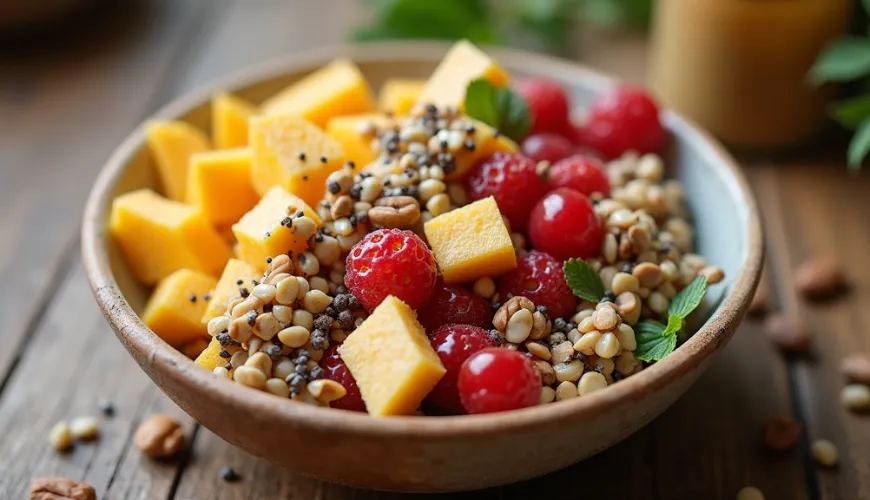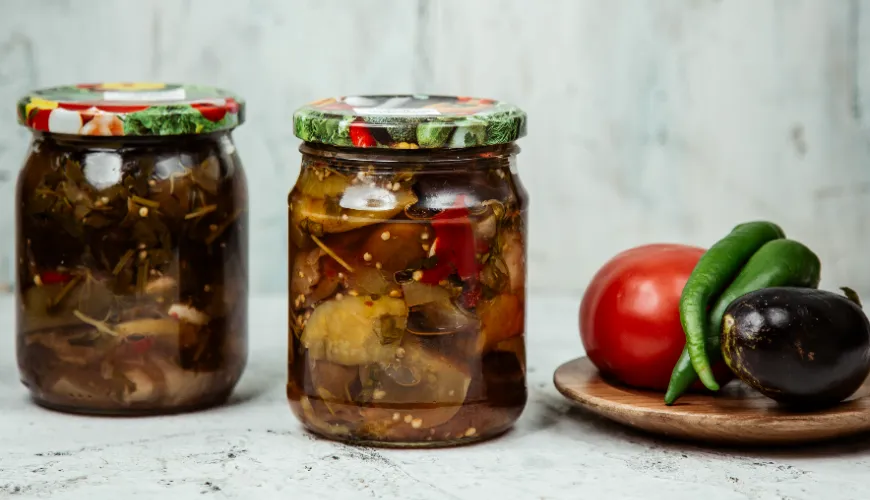
Nata de coco arrives in the Czech Republic and transforms the world of desserts and beverages

The Refreshing World of Nata de Coco - A Coconut Gelatin Delight Capturing the Czech Market
Sometimes you come across a product that completely surprises you with its texture, taste, and origin. Nata de coco is one such discovery – an unusual coconut treat gaining popularity beyond its native Philippines and Southeast Asia. While "nata de coco" is a traditional component of desserts and drinks in Asia, it is gradually making its way to health food shelves here and appearing in smoothie bars or as an ingredient in bubble tea. What exactly is this exotic treat, how is it made, and why is it generating so much interest?
What is Nata de Coco and How is it Made?
Nata de coco – literally translated as "coconut cream" – is a gelatinous substance created by the fermentation of coconut water using specific bacteria (usually of the Acetobacter xylinum species). The result of this process is a semi-transparent, slightly elastic texture that is satisfyingly firm to bite. It is then cut into small cubes and either consumed on its own or added to desserts and drinks.
This product first appeared in the Philippines at the beginning of the 20th century as a way to process excess coconut water – a byproduct of coconut milk or coconut oil production. It later became apparent that besides its interesting texture, nata de coco also offers several nutritional benefits.
Unlike regular jelly, it contains low calories, no fat, and a high fiber content. This is why it is popular among health enthusiasts and those seeking alternatives to traditional sweets.
Nata de Coco as a Drink? Yes, and It Tastes Great
One of the most popular ways you can encounter nata de coco is through drinks with nata de coco pieces. In stores or online shops, you often find products under names like nata de coco drink, coconut drink with nata de coco, or brands like Rio Nata de Coco. These drinks are usually sold in bottles and contain not only coconut jelly but also fruit juice or tea.
The combination of a fruity drink and crispy, gelatinous pieces of nata de coco creates a fun contrast of textures and a refreshing taste. This combination is one reason why products like Rio Nata de Coco are gaining popularity among the younger generation and those seeking a healthier version of sweet sodas.
Like bubble tea that combines tea with tapioca pearls, nata de coco drinks rely on the natural sweetness and fiber of coconut. Some versions of these drinks also include pieces of aloe vera or chia seeds, resulting in a nutrient-rich and flavorful drink, ideal as a morning snack or post-workout refreshment.
Is Nata de Coco Healthy?
A question that comes to mind when encountering a new and not entirely familiar product. In the case of nata de coco, it is safe to say: yes, if you know what you're buying.
Nata de coco itself has very few calories – about 60 kcal per 100 g, contains almost no fat, and is rich in soluble fiber, which supports digestion. Its low glycemic index also ensures it is suitable for those monitoring their blood sugar levels.
The problem arises if nata de coco is sold soaked in sweet syrups or fruit drinks with high sugar content. In such cases, it is essential to read the ingredients – as with any other food. A good quality indicator is when the product comprises coconut water, nata de coco, and for instance, fruit juice without added sugar. Many brands available even in the Czech Republic now offer light versions with natural sweeteners or completely sugar-free.
From Asia to the Czech Table
The story of nata de coco is also a demonstration of how a local and traditional food can gain global popularity. While it's a staple in Filipino home desserts like halo-halo (a mix of crushed ice, condensed milk, fruit, and various jellies), in Japan and South Korea, nata de coco started being massively used in drinks. As they say: “Good things spread quickly.”
Today, you can find nata de coco not only in Asian eateries but also on the shelves of health food stores, vegan shops, or online stores like Ferwer.cz, specializing in products for a sustainable and healthy lifestyle. Here, you can choose from several flavors of nata de coco drinks or a pure version without added sweeteners.
Culinary Tips and Home Experiments
Nata de coco is not just about ready-made drinks. If you get your hands on a pure version without sugar, you can use it in various ways:
- Add a few spoonfuls to a smoothie or fruit salad for extra texture.
- Use it as a topping on homemade ice cream or chia pudding.
- Mix cubes into coconut yogurt and sprinkle with nuts – an excellent and quick breakfast.
In Asia, cooking with nata de coco is popular – sweet and savory recipes use jelly as a contrasting component to soft or crunchy ingredients. For the more adventurous, there are fermentation kits available to make nata de coco at home. You’ll need coconut water, sugar, and the right bacterial strain, resulting in a healthy, homemade alternative to commercially produced sweets.
Why Nata de Coco Deserves Your Attention
In a time when sustainability, locality, and waste reduction are increasingly discussed, nata de coco fits well into this context. It utilizes what would often remain unused – coconut water, a byproduct of coconut processing. Thus, it is an example of upcycling in the food industry, as discussed by organizations like Food Waste Warriors.
Moreover, it is a product that contains no animal ingredients, making it suitable for vegans, and its low sugar and fat content attracts those aiming for healthier eating.
And what's more – it's simply fun. In today's world, where not only taste but also texture, appearance, and the eating experience matter, nata de coco is making its mark among superfoods and modern trends.
As one producer from the Philippines said: “Nata de coco is like the jelly of the future – tasty, healthy, and made from something we previously discarded.”
So whether you're looking for a new alternative to sweets or just wanting to try something unusual, coco de nata – as it is sometimes called in Europe – will not disappoint. Just one taste, and you might find you can't imagine a summer drink or refreshing dessert without it.
Sometimes the greatest joy comes from the least expected ingredients.

